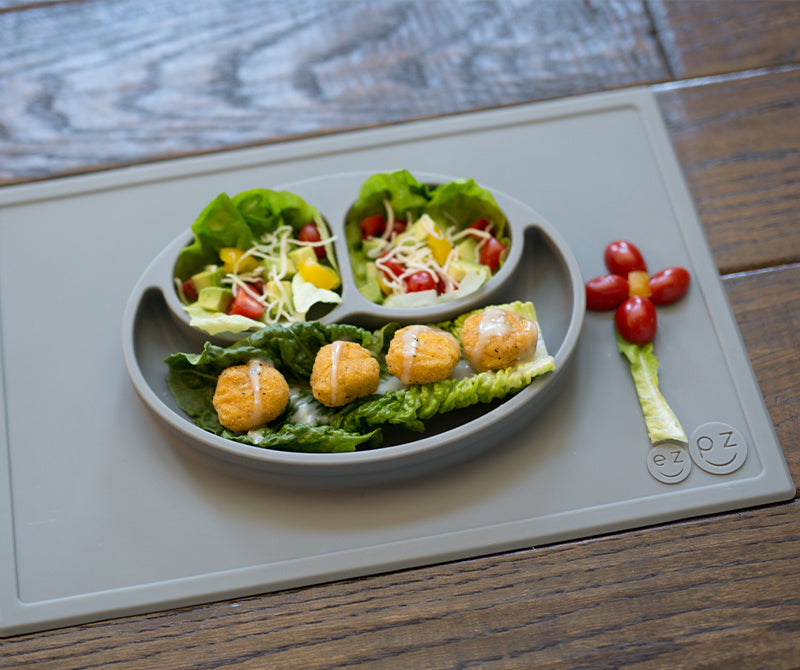Research shows that lettuce is the primary veggie adults consume; for some, it’s the only veggie they eat! On average, an American adult eats about 33 pounds of lettuce per year. Kids – not so much. Since lettuce has beta-carotene, vitamin C and K, iron, potassium and much needed fiber, lettuce is a perfect veggie to introduce to your toddler! Here are my four favorite types of lettuce and tips on how I use them in feeding therapy.
Iceberg: Iceberg lettuce is white, yellow and green in color and has very little flavor. This lettuce is perfect for some of my kids with sensory feeding issues that need a bland taste. It also has a crunchy texture that most kids like to hear when they bite into it. When kids are craving a crunchy texture, iceberg lettuce can be cut up and served with a fun dip (instead of the usual chips or crackers!). Also, this type of lettuce is made up of 90% water. So, if I have a child that struggles with drinking water, is constantly dehydrated or is constipated and/or potty training, this is a great lettuce to introduce and serve.
Butter: Butter lettuce is usually bright green with a sweet flavor and a soft buttery texture. This type of lettuce is my go-to for making lettuce cups. It is usually found at the store in a plastic container to protect the leaves and keep that soft moist taste. I gently rinse the delicate leaves, fill it with the child’s favorite veggies, fruits or protein, and in minutes we have a fun meal! Note – lettuce cups are in the eyes of the Happy Mat in this picture.
Romaine: This type of lettuce is long in length with light green leaves, is mild in flavor and has a crispier texture. It is a hit with kids when introducing it in a Caesar salad, which traditionally includes the universally loved grated cheese and crunchy croutons! Its crisp texture is also great for making lettuce wraps or lettuce ‘boats’ – especially if you fill it with chicken nuggets, a sprinkle of cheese and top it with your kids favorite dressing, like we did here!
Loose-leaf: Loose-leaf lettuce is green in color with a mild flavor, which makes this type of lettuce very common for homemade salads. The leaves have a lot of ruffles and texture, and they hold dressing and grated cheeses well…encouraging picky eaters to eat more salad! The ridges on the loose-leaf lettuce leaves also makes it easier for kids with motor feeding challenges to find it in their mouth, chew and swallow it. I recommend cutting it up into bite sized pieces when serving it to kids because the leaves are so large and kids could overstuff their mouth and possibly gag or choke.
Lettuce Tips: There are many different types of lettuce and salad greens, so don’t give up if your toddler refuses one type. Just keep trying different varieties to figure out their favorite taste and texture. I recommend waiting to introduce lettuce types like endive, chicory, radicchio and escarole to kids, as they are generally bitter, harder to chew or have a pungent aftertaste. Once you find the lettuce type they love, you can switch out the ingredients you put on the lettuce wrap or salad to change up mealtime!
Which variety of lettuce is your family favorite? How do you introduce lettuce at mealtime with your toddler? Is there a tip in this blog that you are going to try at home? Let us know how it goes! #ezpzfun #myezpzmat #lettuce



